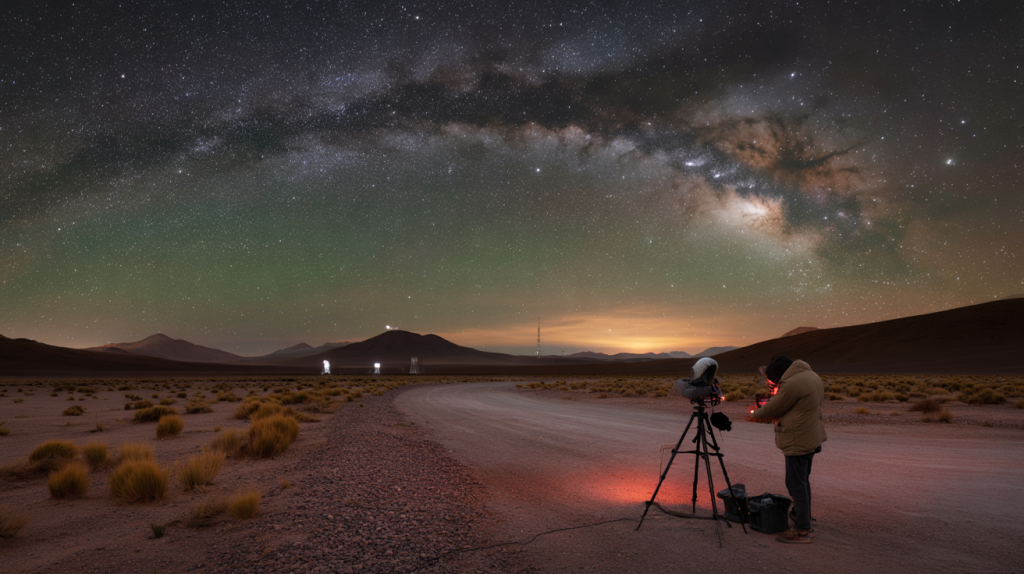Crave a sky full of stars. Here are the best dark-sky destinations worldwide, key facts on light pollution, and simple timing tips that make the trip unforgetable.
Craving a sky that still explodes with the Milky Way from horizon to horizon. These are the best starry-sky destinations right now: Chile’s Atacama Desert, New Zealand’s Aoraki Mackenzie, Namibia’s NamibRand, Ireland’s Kerry, Spain’s Canary Islands, Canada’s Mont-Mégantic, plus US icons like Death Valley. Each place pairs protected darkness with clarity, so the night actually looks like night.
Context matters. Light pollution hides starlight for most people on Earth, which makes picking the right spot non negotiable. A landmark study in 2016 led by Fabio Falchi reported that more than one third of humanity can no longer see the Milky Way and about 80 percent of the world lives under light-polluted skies. Since 1988, DarkSky International has certified Parks, Reserves and Communities that fight glare at the source. The destinations below either carry those labels or offer proven, naturally dark conditions.
Best dark-sky destinations : quick picks
Looking for the sweet spot between darkness, access and year-round appeal. Start here, then fine-tune by season and moon phase.
- Atacama Desert, Chile : Ultra-dry high plateau near San Pedro, with observatory-grade skies on the Chajnantor plain around 5,000 m.
- Aoraki Mackenzie Dark Sky Reserve, New Zealand : Designated in 2012, alpine air and wide valleys that frame the Southern Cross.
- NamibRand Nature Reserve, Namibia : International Dark Sky Reserve since 2012, dune-and-desert vistas with true gold-level darkness.
- Kerry International Dark Sky Reserve, Ireland : Atlantic-coast views and low coastal development for crisp winter constellations.
- La Palma and Tenerife, Canary Islands, Spain : Protected by the 1988 Canary Islands Sky Law, with high-altitude viewpoints and pro observatories.
- Mont-Mégantic International Dark Sky Reserve, Québec, Canada : Created in 2007, the world’s first such reserve, backed by strong local lighting rules.
- Death Valley National Park, California, USA : Certified dark-sky park with immense horizons and dry desert air.
The stakes : light pollution facts that change the plan
The numbers tell a clear story. The 2016 “New World Atlas of Artificial Night Sky Brightness” led by Fabio Falchi showed the Milky Way is invisible to over one third of people globally, while 99 percent of the population in the United States and Europe lives under skyglow. That pushes serious stargazing out toward protected parks and remote highlands.
Protection works. DarkSky International, founded in 1988, coordinates certifications that cut glare, shield fixtures and set curfews. Mont-Mégantic’s 2007 designation became a model for regional lighting policy. Aoraki Mackenzie and NamibRand followed in 2012 with large-scale reserves where communities adjusted lighting to preserve natural night.
Law helps too. The Canary Islands Sky Law, enacted in 1988, regulates outdoor lighting, air traffic routes and even industrial emissions near observatories. La Palma’s Roque de los Muchachos sits above temperature inversions, so the sky stays steady while lights stay low. That mix of altitude and policy keeps stars sharp.
Where the stars still burst : Chile, New Zealand, Namibia, Ireland, Canary Islands
Chile’s Atacama Desert has become the headline act. The combination of extreme aridity, high elevation and far-from-city geography gives the sky that inky, velvety backdrop. Around San Pedro de Atacama, tours head toward Valle de la Luna and the altiplano; up on the Chajnantor plateau near 5,000 m, research observatories chase the faintest signals.
In New Zealand, the Aoraki Mackenzie Dark Sky Reserve frames the Milky Way over lakes Pukaki and Tekapo. Clear austral nights often reveal the Magellanic Clouds to the naked eye. The reserve’s 2012 designation tied tourism, science and local lighting codes together, so visitors still find true darkness within easy reach of lodging.
Namibia’s NamibRand Nature Reserve offers desert skies that feel ancient. Dunes, gravel plains and very low humidity make contrast pop. With a 2012 reserve designation and strict on-site lighting, nights deliver dense star fields that city dwellers rarely imagine. It is quiet, it is dry, and the Milky Way arches bright across the desert wind.
Ireland’s Kerry International Dark Sky Reserve turns Atlantic weather breaks into drama. When a front clears, Orion and the Pleiades sparkle over beaches and mountains with little glare on the horizon. Wild Atlantic Way by day, deep-sky show by night. Compact distances mean an evening drive can pivot from clouds to crystal.
Spain’s Canary Islands bring altitude and law on the same ticket. La Palma and Tenerife put many viewpoints above low clouds, guiding travelers toward stable seeing. The 1988 Sky Law limits intrusive light near observatories like Roque de los Muchachos and Teide, keeping brightness down while tourism stays vibrant.
When to go and how to look : simple steps for a wow sky
Start with a calendar. Aim for the new moon or a crescent phase, when moonlight will not wash out faint detail. If the date cannot budge, head for the darkest class of site on the map and keep the moon behind you.
Think clarity before gear. Dry air, altitude and distance from cities matter more than a telescope. A red-light headlamp, a tripod and a wide-angle lens help, yet even naked-eye viewing will thrill under a true dark sky. Let your eyes adapt for 20 minutes, then look slightly off target to catch faint nebulae and clusters.
Local rules protect your night. In DarkSky Reserves and Parks, switch off bright lights at the lodge, park in signed areas, and use curtains indoors to avoid spill. That courtesy keeps the sky pristine for everyone on site and supports the certifications that make these places special.
One last filter : weather. High deserts and islands above cloud layers offer the most consistent results, while coastal and mountain regions reward patience right after a front passes. Pick your window, give yourself two nights, and the sky usually returns the favor.
